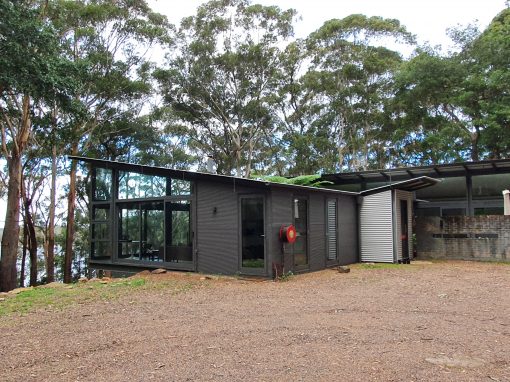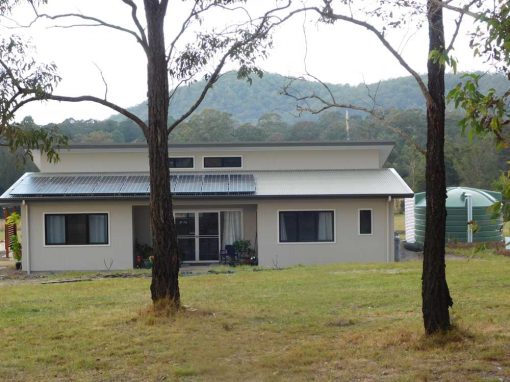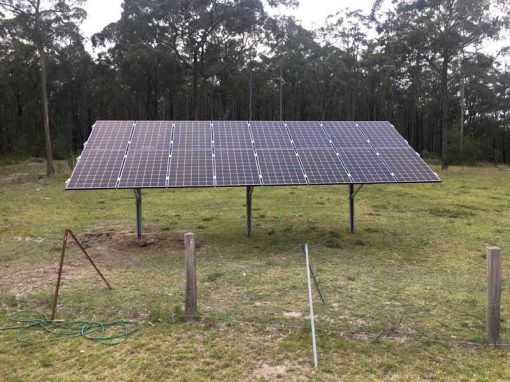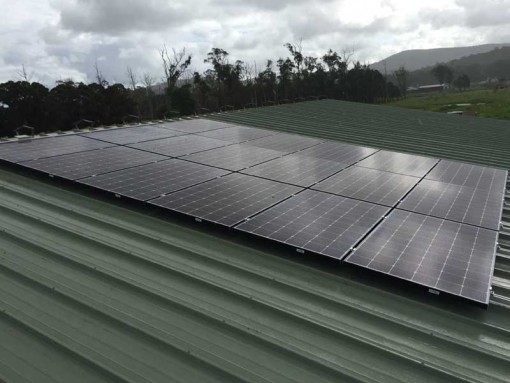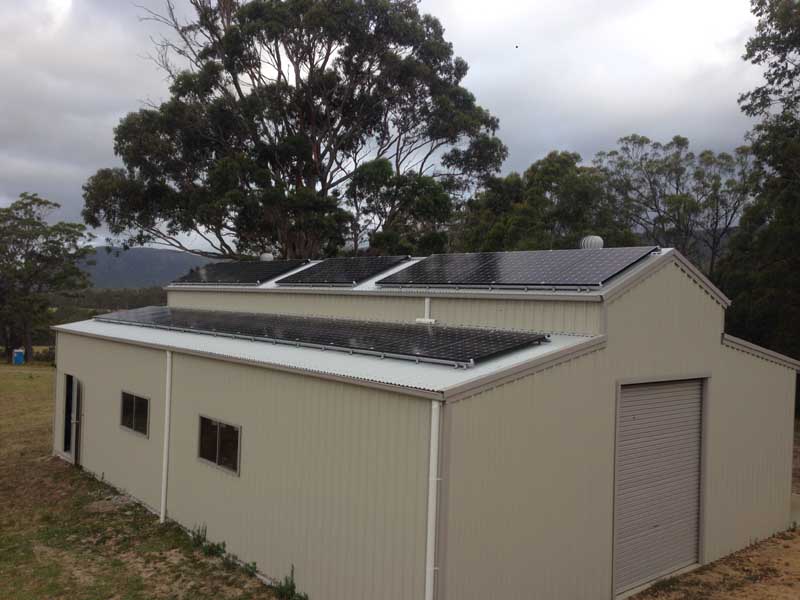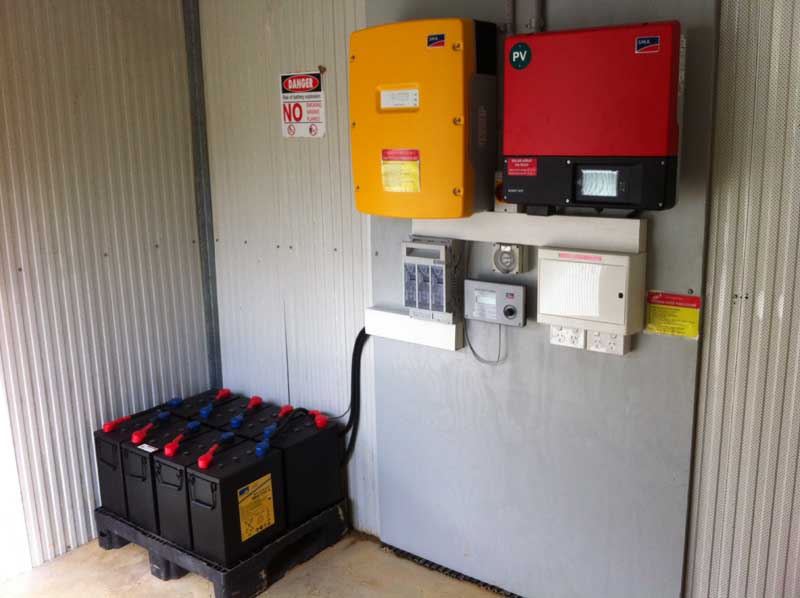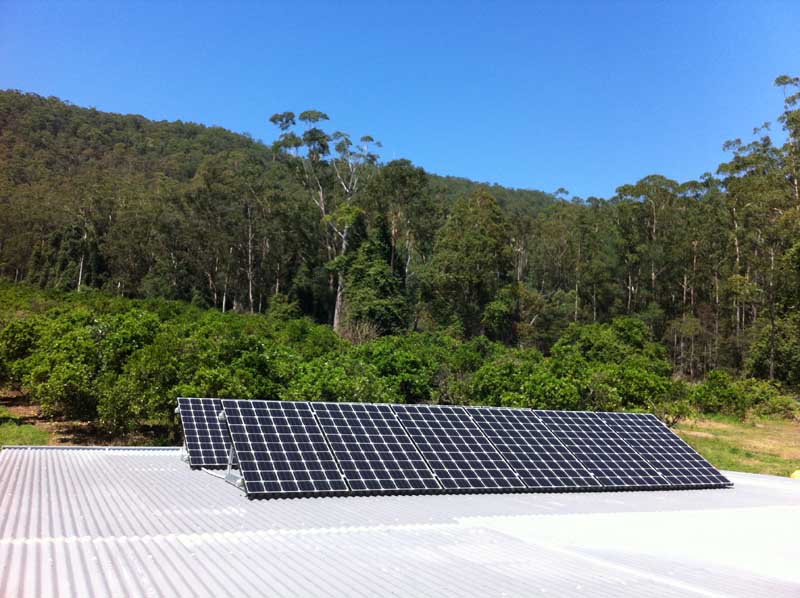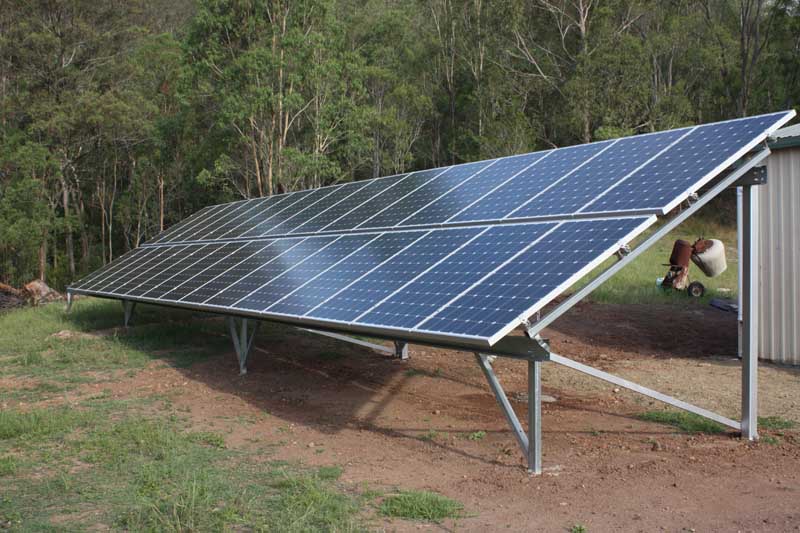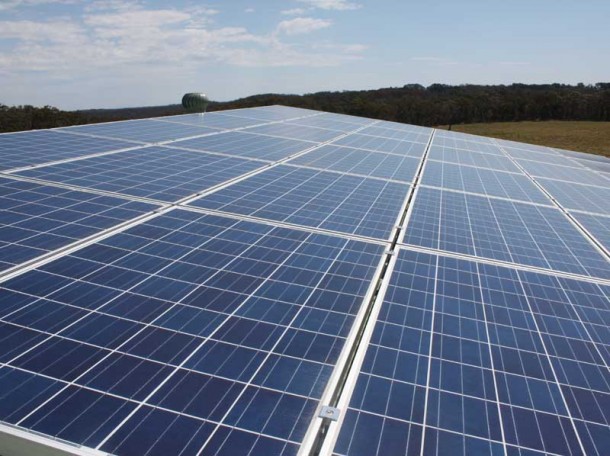Off Grid Solar Power Design
Soaring peak demand has caught our electricity networks unprepared, leading to dramatic price increases over the past few years and more increases to come. With an off grid solar power system not only will you be reducing your carbon footprint but you will be responsible for generating your own power and hence have no further electricity bills or service charges.
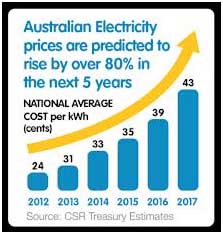
System Design
Careful assessment of your power needs is essential to design the right system for you as is the ongoing management of your power consumption which includes the use of low energy devices wherever possible. Assess your current energy demand using our Off-Grid Load Profile.
An off grid solar power system comprises of solar panels, mounting system, an inverter or charger, a management unit and a battery bank.
System Types: AC & DC Coupled Systems
Depending on the types of power requirement you have there are two types of off grid solar power systems available, AC Coupling or DC Coupling. AC coupling is more suited to larger installations requiring a more consistent AC power load where as DC coupled systems are ideal for those requiring a more intermittent DC power load.
AC Coupled Off Grid Solar Power System
This system is more suited to larger PV installations requiring AC power with more frequent load requirements both day and night. This also allows the use of standard AC appliances in the home which are cheaper and more readily available.
AC Coupling system accurately manages the power production and storage with less battery cycling. It is easier to design to meet your power requirements and has more flexibility to upgrade the system, including wind power or additional solar panels, compared to DC Coupling.
DC Coupled Off Grid Solar Power System
This system is more suited to smaller installations requiring a predominately DC power with more intermittent load at night for example lighting, powering a caravan or similar small style needs.
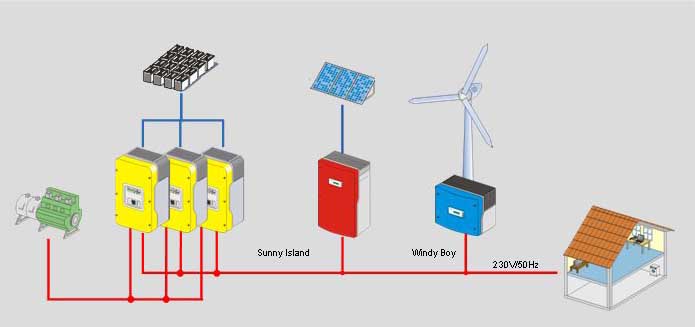
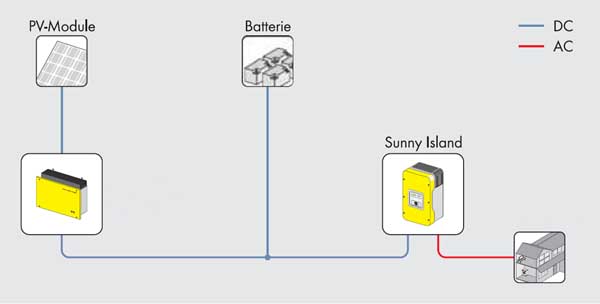
Inverter (red) receives DC current and converts to AC and supplies house with power directly
Management system (yellow) balances the power demand and production to keep house supplied with power and batteries charged. This is the brains of the system and is full self sustained, remotely controlling the inverter, battery management and even the generator in times of need.
Battery Bank receives power from the management system and stores it for future use. The single greatest cost of the system will be the battery bank hence the preservation of battery life is paramount to the longevity of the systems performance. Superior Solar prefers the high quality German made Sonnenschein batteries for this reason. Everybody would relate to the impact of a failing battery, whether it be a phone or car etc, not holding charge and how this significantly impacts on the function of the unit.
With the AC coupled system design the cycling of the batteries is reduced and can significantly increase the battery life expectancy.
Generator (green) supplies AC power management system in times of need.
Charger feeds all the DC power produced by the panels into the battery for storage
Inverter/Management system draws DC power from the battery and converts to AC for supply to the house and can remotely manage the generator as required in periods of extended bad weather or when there is usually high demands of power.
Battery Bank receives all the DC current from the panels and supplies the Inverter as required. The single greatest cost of the system will be the battery bank hence the preservation of battery life is paramount to the longevity of the systems performance. Superior Solar prefers the high quality German made Sonnenschein batteries for this reason. Everybody would relate to the impact of a failing battery, whether it be a phone or car etc, not holding charge and how this significantly impacts on the function of the unit.
Want more information on each of the components above?
Off grid systems are a completely self sustained power source
where connection to the main electricity grid is not available, not financially viable or simply because you choose not to.
Power produced through the day is stored in a battery bank for use at other times.
Off Grid Solar Power Rebates
Small Technology Credits (STCs)
This number is based on the amount of electricity in megawatt hours (MWh) generated by your small-scale solar panel, wind or hydro system over the course of its lifetime of up to 15 year where one STC equals one megawatt hour (MWh) of electricity generated or displaced.
The number of certificates you can claim may vary depending on your geographic location and in NSW approximately 20 STCs are generated for energy 1kW of energy produced or displaced. the value of an STC does vary but currently are $36.
Superior Solar Off Grid Projects
